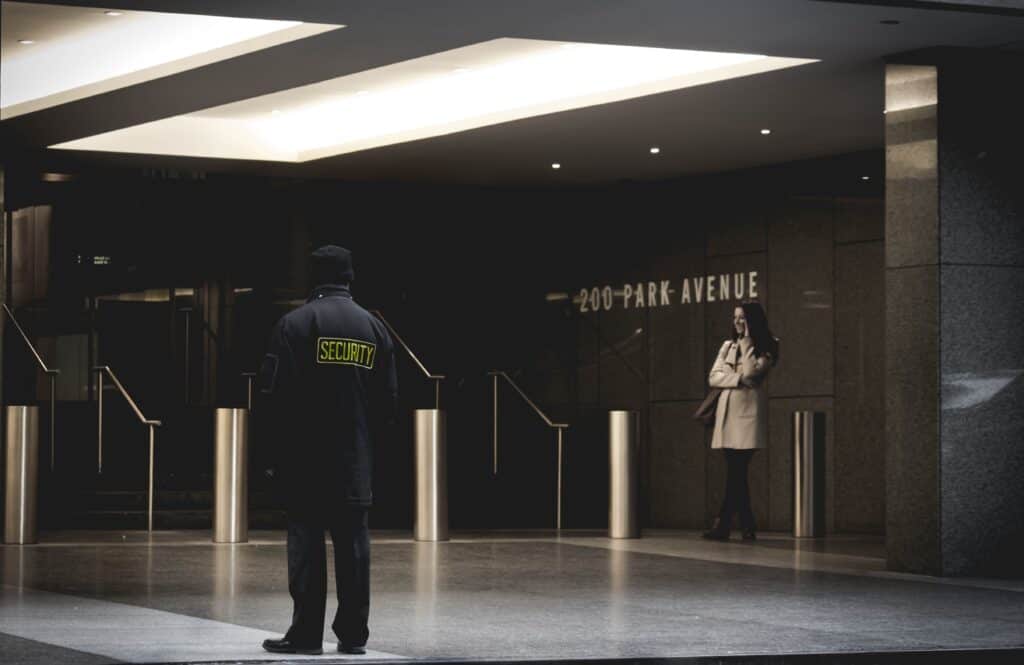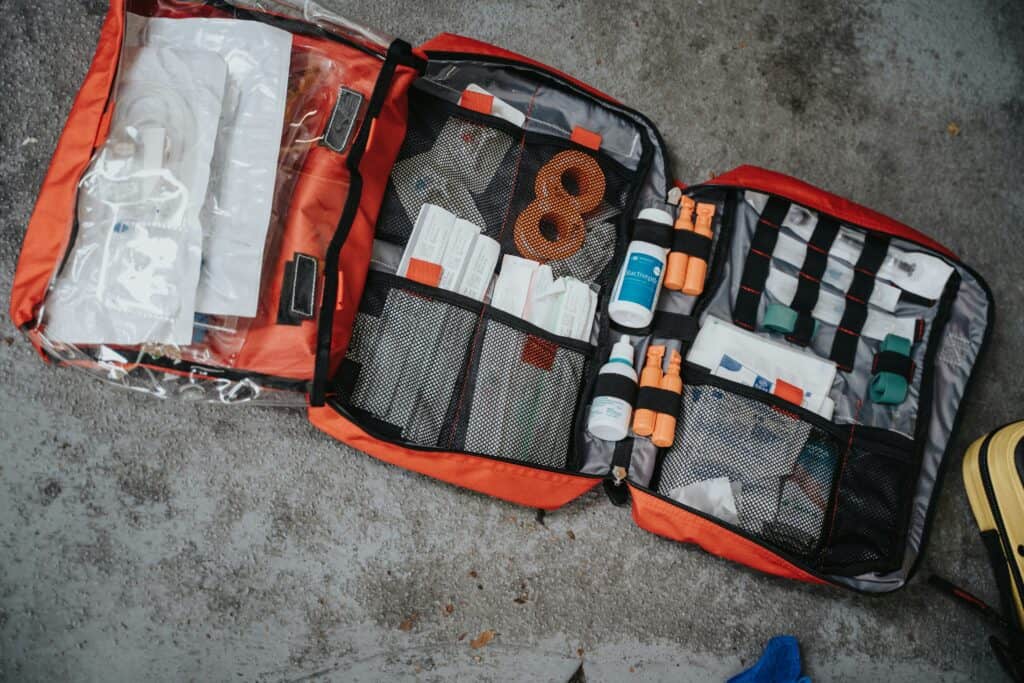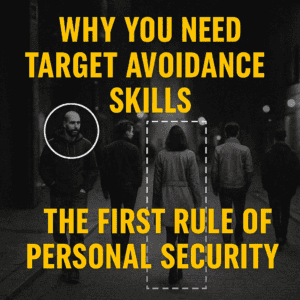Deter, Detect, Deny, Delay, and Defend are the five crucial elements of an overall security system. The five Ds are often used to design a perimeter protection plan that can reduce the overall cost of a facility’s security system and improve the effectiveness of the plan. The 5Ds starting from the outside are Deter, Detect, Deny, Delay, and Defend.
Deterrence is the ideal solution to prevent an attack from happening in the first place. It can prove especially effective when combating inexperienced lone wolves who may be more easily dissuaded by the obvious challenges of attacking a site. Detection is the next step, which involves identifying any suspicious activity and providing an early warning of potential threats. Denial is the act of preventing access to a facility or area by unauthorized persons. Delay is the act of slowing down an attacker’s progress and giving security personnel time to respond. Defend is the final step, which involves using force to protect people and property from an attack.
In today’s world, security threats are becoming more sophisticated and complex. Therefore, it is essential to have a comprehensive security system that includes all five Ds of security. A well-designed security system should incorporate all five elements to ensure the safety of people and property. The 5Ds approach can be applied to both physical and cyber security systems. As organizations continue to face new and evolving security threats, it is essential to have a security system that can adapt to these changes.
Understanding the 5 Ds
The 5 Ds – Deter, Detect, Deny, Delay, and Defend – are fundamental principles of security that can be applied to a wide range of scenarios, from physical security to cybersecurity. Each D plays a specific role in securing a facility or system, and together, they form an effective, layered security approach.
Deter
Deterrence is the first line of defense. It involves creating a visible and effective security presence that discourages potential threats from even attempting to breach the perimeter. This can include physical barriers, such as fences and gates, as well as security cameras, alarms, and signage. The goal is to make it clear to potential attackers that the facility or system is well-protected and that any attempt to breach it will be met with resistance.
Detect
Detection is the process of identifying potential threats as early as possible. This can involve a range of technologies, such as motion sensors, video analytics, and intrusion detection systems. The goal is to detect threats before they have a chance to breach the perimeter and enter the facility or system.
Deny
Denial is the act of preventing a threat from gaining access to the facility or system. This can involve physical barriers, such as fences and gates, as well as access control systems, such as biometric scanners and keycard readers. The goal is to make it as difficult as possible for a threat to breach the perimeter and gain access to the facility or system.
Delay
Delay is the act of slowing down a threat once it has breached the perimeter. This can involve physical obstacles, such as bollards and barriers, as well as security personnel who are trained to respond quickly and effectively to a breach. The goal is to buy time for security personnel to respond and neutralize the threat before it can cause any damage.
Defend
Defense is the act of neutralizing a threat once it has breached the perimeter. This can involve a range of tactics, from physical force to cybersecurity measures, such as firewalls and intrusion prevention systems. The goal is to stop the threat and prevent it from causing any further damage.
In summary, the 5 Ds – Deter, Detect, Deny, Delay, and Defend – are essential principles of security that can be applied to a range of scenarios. By understanding and implementing these principles, individuals, and organizations can create an effective, layered security approach that can help prevent and neutralize threats.
Deterrence Strategies
Deterrence is the first line of defense in any security system. It involves discouraging potential criminals from committing a crime by making it clear that the risks of getting caught and facing consequences outweigh the potential benefits of the crime. Effective deterrence strategies can significantly reduce the likelihood of a security breach and protect valuable assets.
There are several deterrence strategies that organizations can use to prevent security breaches. One of the most common is the use of visible security measures such as security personnel, security gates, and security lighting. These measures make it clear to potential criminals that the site is being monitored and that any attempt to breach security will be met with resistance.
Another effective deterrence strategy is the use of signage. Signs that warn of the presence of security cameras, alarms, and other security measures can be an effective way to deter potential criminals. These signs make it clear that the site is being monitored and that any attempt to breach security will be detected.
CCTV cameras are also an effective deterrent. Not only do they provide a means of detecting security breaches, but they also serve as a visible reminder to potential criminals that they are being watched. In addition, CCTV footage can be used as evidence in the event of a security breach, which can help to identify and prosecute the perpetrators.
Fences and parking controls can also be used to deter criminals. Fences create a physical barrier that makes it more difficult for criminals to gain access to the site, while parking controls can be used to restrict access to authorized personnel only.
Finally, software-based deterrence strategies can be used to protect digital assets. These strategies can include firewalls, intrusion detection systems, and other security software that can detect and prevent unauthorized access to digital assets.
Overall, deterrence strategies are an essential component of any effective security system. By making it clear that the risks of committing a crime outweigh the potential benefits, organizations can significantly reduce the likelihood of a security breach and protect valuable assets.
Detection and Denial Systems
Detection and denial systems are crucial components of any effective security strategy. These systems are designed to detect and deny unauthorized access to a facility or property. They work by monitoring the entry points and alerting security personnel or triggering an alarm if an unauthorized entry is detected.
Intrusion detection systems are a common type of detection system used in many facilities. These systems use sensors to detect movement or vibrations near entry points, such as doors or windows. When an intrusion is detected, the system will trigger an alarm or alert security personnel.
Access control systems are another type of detection and denial system. These systems use gates, entry points, and security personnel to control who is allowed to enter a facility. Access control systems can be as simple as a manned security gate or as complex as a multi-factor authentication system that requires a key card, PIN, and biometric scan to gain access.
CCTV cameras are also commonly used in detection and denial systems. These cameras can be used to monitor entry points and detect unauthorized access. They can also be used to record footage of any incidents that occur, which can be used as evidence in investigations.
Alarm systems are another important component of detection and denial systems. These systems can be triggered by intrusion detection sensors or CCTV cameras. When an alarm is triggered, it alerts security personnel or triggers an audible alarm that can deter intruders.
Denial systems are designed to physically prevent unauthorized access. Security gates, fences, and barriers are common types of denial systems. These systems can be used to prevent vehicles or pedestrians from entering a facility. They can also be used to create secure areas within a facility, such as a server room or cash office.
Overall, detection and denial systems are essential components of any effective security strategy. By using a combination of detection and denial systems, facilities can create multiple layers of security that make it difficult for intruders to gain access.
Delay and Defend Tactics

Delay and defend tactics are essential components of any security plan, and they play a crucial role in preventing unauthorized access to critical assets. Delay tactics aim to slow down attackers and give security personnel enough time to mount an effective response. Defend tactics, on the other hand, focus on actively stopping attackers from gaining access to protected areas.
One of the most effective delay tactics is the use of physical barriers. Barriers can be used to slow down attackers, giving security personnel enough time to respond effectively. The type of barrier used will depend on the level of security required. For example, bollards can be used to protect against vehicle attacks, while fences and walls can be used to prevent unauthorized access on foot.
Security personnel are also an essential component of any delay and defend strategy. They can be used to monitor access points, respond to alarms, and deter potential attackers. Security teams should be trained to respond to a range of scenarios, from minor incidents to major security breaches. They should also be equipped with the necessary tools and equipment to respond effectively.
In addition to physical barriers and security personnel, security solutions such as CCTV cameras and access control systems can also be used to delay and defend against attackers. CCTV cameras can be used to monitor access points and detect suspicious activity, while access control systems can be used to restrict access to critical areas.
An effective response is critical in any delay and defend strategy. Security personnel should be trained to respond quickly and effectively to any security breach, and they should have access to the necessary tools and equipment to mount an effective defense. This may include weapons, communication devices, and protective gear.
Overall, delay and defend tactics are essential components of any security plan. By using physical barriers, security personnel, and security solutions, organizations can effectively delay and defend against attackers, preventing unauthorized access to critical assets.
Implementing Security Measures
Implementing security measures involves a combination of physical and software-based solutions. Security personnel, access control, and surveillance systems are all important components of a comprehensive security plan.
Perimeter security is a critical aspect of site security. Fences, gates, and barriers can deter criminals from entering the premises. Intrusion detection systems can alert security personnel of any unauthorized access attempts. Parking controls and access control systems can limit entry to authorized personnel only.
Effective response to security incidents is also important. The response should counter the anticipated activity of an unauthorized person within a time appropriate to the delay measures. Security personnel should be trained to prepare measures to prevent, resist, or mitigate the impact of an attack or event.
Lighting is another important aspect of security measures. Security lighting can deter criminals and provide better visibility for surveillance systems. It can also help identify potential hazards and prevent accidents.
Critical infrastructure requires additional security measures. Safes, burglar alarms, and CCTV cameras can help protect assets from theft or damage. Manned security gates and security teams can provide an additional layer of defense.
Businesses can benefit from security services that provide customized security solutions. Security personnel can be trained to respond to specific threats and protect assets. Security software can also be used to monitor and manage security systems.
In summary, implementing security measures involves a combination of physical and software-based solutions. Perimeter security, effective response, lighting, critical infrastructure, and business security services are all important components of a comprehensive security plan.
Frequently Asked Questions
What are the 5 D’s of security?
The 5 D’s of security are Deter, Detect, Deny, Delay, and Defend. These are the five core elements of a comprehensive security strategy that organizations can use to protect their assets and prevent unauthorized access.
What is the difference between deter and detect in security?
Deterrence is the act of discouraging someone from attempting to commit a crime by making it clear that the risk of being caught is high. Detection, on the other hand, involves identifying and responding to a security breach after it has occurred. Deterrence is proactive, while detection is reactive.
How does delay fit into the 5 D’s of security?
Delay is an important component of the 5 D’s of security because it can slow down an attacker’s progress and buy time for security personnel to respond. Delay measures can include physical barriers, such as fences or gates, or technical measures, such as access controls or intrusion detection systems.
What is the purpose of the defend layer of security?
The defend layer of security is the final layer of protection in a security strategy. Its purpose is to stop attackers who have managed to breach the other layers of security. Defend measures can include physical security personnel, security cameras, or alarm systems.
How can physical security be improved through deterrence?
Physical security can be improved through deterrence by implementing measures that make it clear that the risk of being caught is high. This can include visible security personnel, signage warning of surveillance, or security cameras that are easily visible.
What is the role of detection in security?
Detection is an important component of a security strategy because it allows organizations to identify and respond to security breaches quickly. Detection measures can include security cameras, intrusion detection systems, or security personnel monitoring access points.









